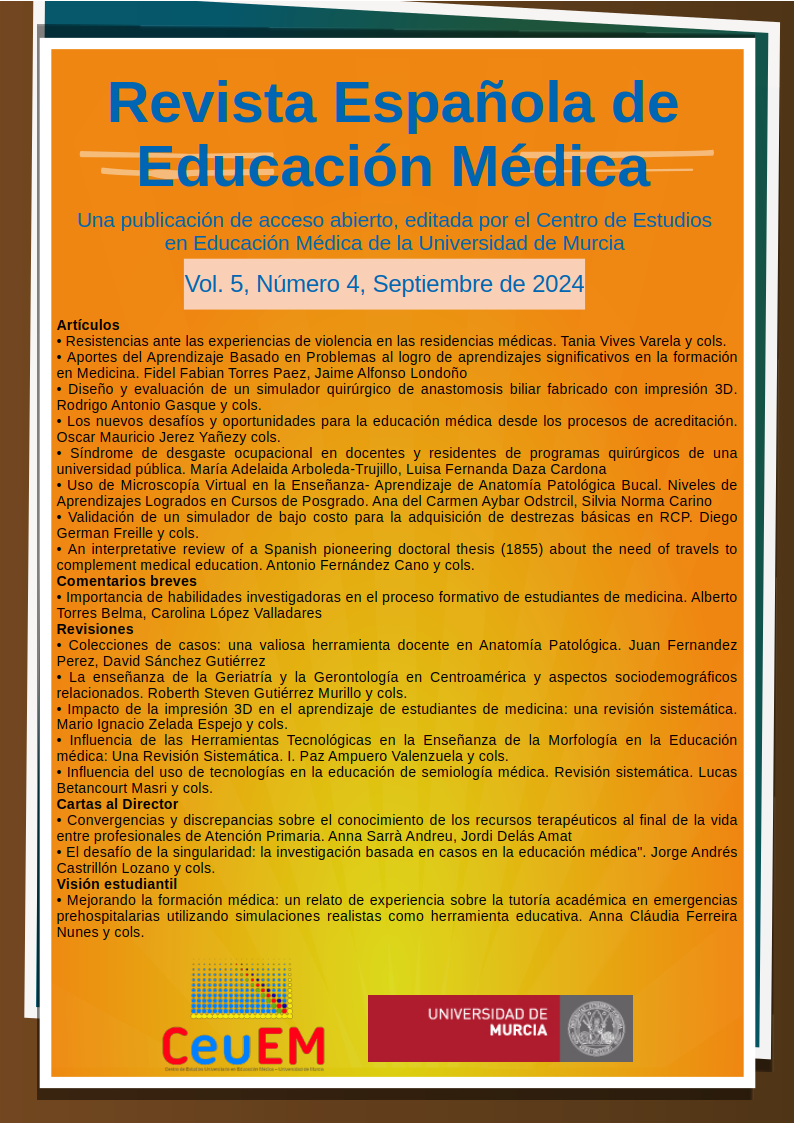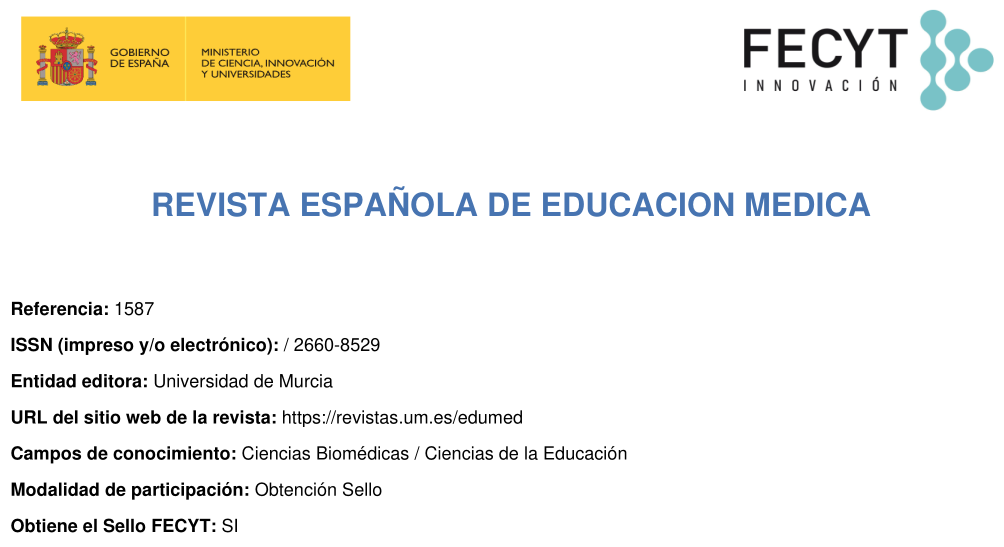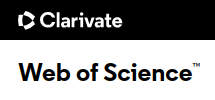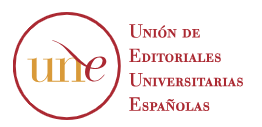Mejorando la formación médica: un relato de experiencia sobre la tutoría académica en emergencias prehospitalarias utilizando simulaciones realistas como herramienta educativa
Resumen
Resumen: La educación médica basada en simulaciones realistas ha sido una estrategia de enseñanza
ampliamente utilizada para el desarrollo de competencias técnicas y no técnicas en la formación de
profesionales médicos. De esta manera, las simulaciones asociadas con el ejercicio de la tutoría académica tienen el potencial de mejorar la autoconfianza y el aprendizaje del futuro profesional. Objetivo: Evidenciar un relato de experiencia sobre el aprendizaje médico proporcionado por la experiencia de los estudiantes en el rol de tutores en la asignatura de emergencias prehospitalarias. Relato:
Entre abril y julio de 2023, en el rol de tutores en una asignatura curricular de soporte básico de vida,
se ofreció a los estudiantes de medicina la posibilidad de actuar como tutores y desarrollar actividades simuladas que involucraban escenarios de paro cardiorrespiratorio y atención inicial al politraumatizado. Se observó que la interacción entre tutores y estudiantes contribuyó al reconocimiento de la importancia del aprendizaje de habilidades blandas (soft kills). Resultados: De acuerdo con las investigaciones actuales sobre los resultados positivos de la educación médica basada en simulaciones
realistas, se percibe que el ejercicio de la tutoría en disciplinas de emergencia es un recurso útil para
el perfeccionamiento de habilidades no técnicas, como liderazgo, comunicación y trabajo en equipo, en el contexto de la formación médica. Conclusión: Las tutorías académicas son herramientas propicias para el aprendizaje de los estudiantes de medicina y resultaron ser eficaces para el entrenamiento en situaciones de emergencias médicas.
Descargas
Métricas
-
Resumen309
-
pdf227
-
pdf 227
Citas
McCrea DL, Coghlan RC, Champagne-Langabeer T, Cron S. Collaborative Interprofessional Health Science Student Led Realistic Mass Casualty Incident Simulation. Healthcare, 2023, 11(1), 40. https://doi.org/10.3390/healthcare11010040
Nicolaides M, Theodorou E, Emin EI, Theodoulou I, Andersen N, Lymperopoulos N, Odejinmi F, Kitapcioglu D, Aksoy ME, Papalois A, Sideris M. Team performance training for medical students: Low vs high fidelity simulation. Ann Med Surg (Lond), 2020; 55, 308-315. https://doi.org/10.1016/j.amsu.2020.05.042
Sterz J, Gutenberger N, Stefanescu MC, Zinßer U, Bepler L, Linßen S, Schäfer V, Carstensen P, Verboket RD, Adili F, Ruesseler M. Manikins versus simulated patients in emergency medicine training: a comparative analysis. Eur J Trauma Emerg Surg, 2022, 48, 3793-3801. https://doi.org/10.1007/s00068-021-01695-z
Wang S, Ren X, Ye J, Wang W, Huang H, Qin C. Exploration of simulation-based medical education for undergraduate students. Medicine (Baltimore), 2021, 100(20), e25982. https://doi.org/10.1097/MD.0000000000025982
Farias DA, Guarda SN, Santos JPS, Reis MSM, Passos RDH, Correia LC, Caldas JR, Gobatto ALN, Teixeira M, Oliveira A, Ribeiro MP, Batista PBP, Calderaro M, Paschoal Junior F, Pontes-Neto OM, Ramos JGR. Realistic simulation is associated with healthcare professionals’ increased self-perception of confidence in providing acute stroke care: a before-after controlled study. Arq Neuropsiquiatr, 2021, 79(1), 2-7. https://doi.org/10.1590/0004-282X-anp-2019-0369
Beaven A, Griffin D, James H. Highly realistic cadaveric trauma simulation of the multiply injured battlefield casualty: an international, multidisciplinary exercise in far-forward surgical management. Injury, 2021, 52.5, 1183-189. https://doi.org/10.1016/j.injury.2020.09.023
Zargaran A, Houlden R, O'Neill P, Schaffer S, Chang V, Kafai Golahmadi A, Hirniak J, Turki M, Zargaran D. Emergency medicine undergraduate simulation training during the COVID-19 pandemic: a course evaluantion. Injury, 2022, 53(10), 3191-3194. https://doi.org/10.1016/j.injury.2022.07.003
Alinier G, Oriot D. Simulation-based education: deceiving learners with good intent. Adv Simul (Lond), 2022, 7(1), 8. https://doi.org/10.1186/s41077-022-00206-3
Yu JH, Chang HJ, Kim SS, Park JE, Chung WY, Lee SK, et al. Effects of high-fidelity simulation education on medical students’ anxiety and confidence. PLoS ONE, 2021, 16 (5). https://doi.org/10.1371/journal.pone.0251078
Zhang C. A literature study of medical simulations for non-technical skills training in emergency medicine: twenty years of progress, an integrated research framework, and future research avenues. Int J Environ Res Public Health, 2023, 20(5), 4487. https://doi.org/10.3390/ijerph20054487
Meese M.M., O'Hagan, E.C., Chang, T.P. Healthcare provider stress and virtual reality simulation: a scoping review Simul Healthc, 2021, 16(4), 268-274. https://doi.org/10.1097/SIH.0000000000000484
Hippe DS, Umoren RA, McGee A, Bucher SL, Bresnahan BW. A targeted systematic review of cost analyses for implementation of simulation-based education in healthcare. SAGE Open Medicine, 2020, 8. https://doi.org/10.1177/2050312120913451
Nascimento ER do, Martins MM da M. A importancia da vivência na monitoria para a formação de profissionais docentes. EnPe, 2022, 3(1), 1-14. https://revistas.uece.br/index.php/ensinoemperspectivas/article/view/8694
Philippon AL, Truchot J, De Suremain N, Renaud MC, Petit A, Baron GL, Freund Y. Medical students’ perception of simulation-based assessment in emergency and paediatric medicine: a focus group study BMC Med Educ, 2020, 21(1), 586. https://doi.org/10.21203/rs.3.rs-41170/v1
Juniat V, Bourkiza R, Das A, Das-Bhaumik R, Founti P, Yeo C, Mathew R, Okhravi N. Understanding visual impairment and its impacto n patients: a simulation-based training in undergraduate medical education. Journal of Medical Education and Curricular Development, 2019, 6. https://doi.org/10.1177/2382120519843854
Derechos de autor 2024 Servicio de Publicaciones de la Universidad de Murcia

Esta obra está bajo una licencia internacional Creative Commons Atribución-NoComercial-SinDerivadas 4.0.
Las obras que se publican en esta revista están sujetas a los siguientes términos:
1. El Servicio de Publicaciones de la Universidad de Murcia (la editorial) conserva los derechos patrimoniales (copyright) de las obras publicadas y favorece y permite la reutilización de las mismas bajo la licencia de uso indicada en el punto 2.
© Servicio de Publicaciones, Universidad de Murcia
2. Las obras se publican bajo una licencia Creative Commons Reconocimiento-NoComercial-SinObraDerivada 4.0.
![]()
3. Condiciones de auto-archivo. Se permite y se anima a los autores a difundir electrónicamente las versiones preprint (versión antes de ser evaluada y enviada a la revista) y/o post-print (versión evaluada y aceptada para su publicación) de sus obras antes de su publicación, ya que favorece su circulación y difusión más temprana y con ello un posible aumento en su citación y alcance entre la comunidad académica.




















